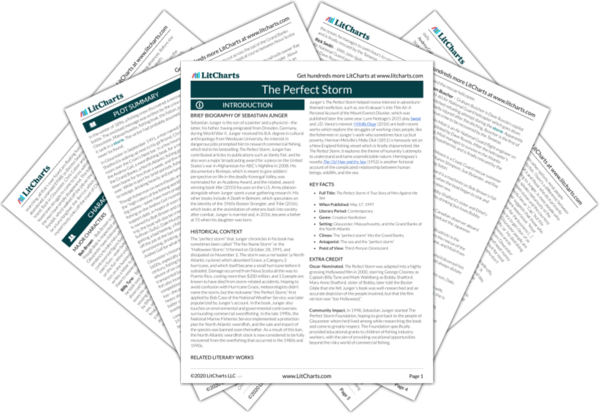Ernie Hazard’s experience suggests that endangered fishermen often deal with danger as just another set of problems to be solved; whatever happened, the men of the
Andrea Gail might not have had time to process the reality that they were dying. This possibility seems never to have been too far from fishermen’s minds, though, as Bobby’s early premonitions suggest.
